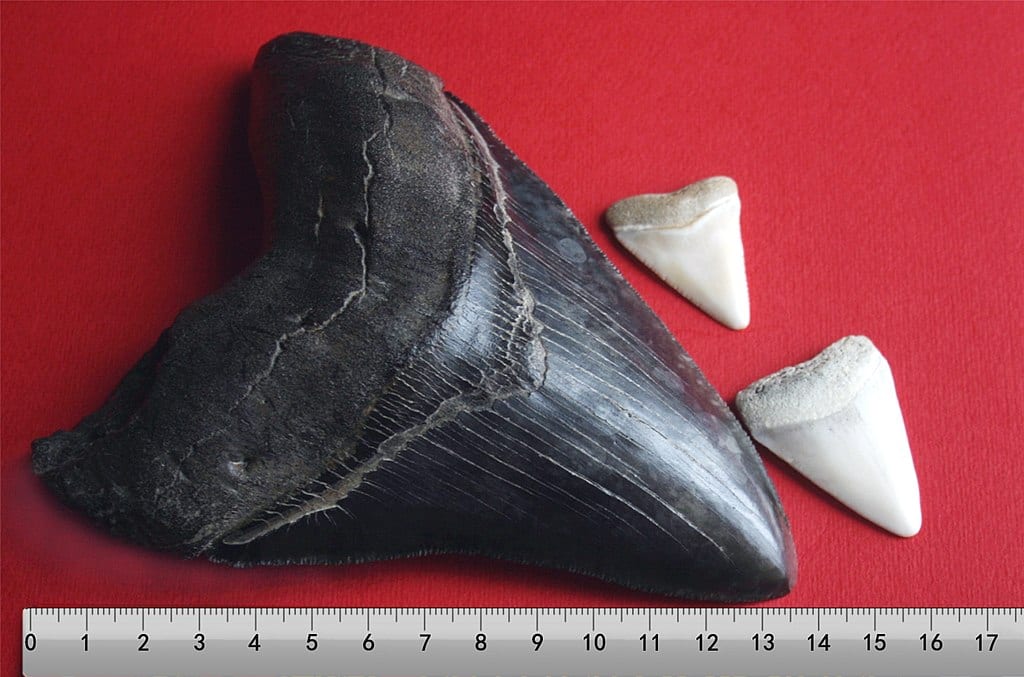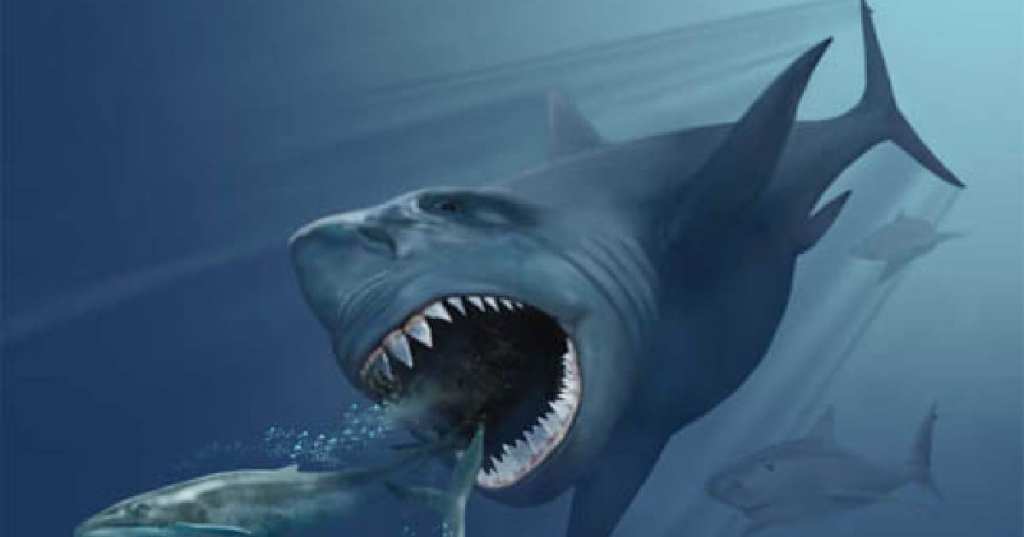If you were a child once, there’s a good chance that you were fascinated with dinosaurs. If you’re an adult, there’s a chance that fascination lives on – you love the Jurassic Park movies, and somewhere in the back of your mind, you think it would be pretty awesome to meet a live dinosaur…as long as it’s not a meatasaurus.
You probably also know that direct descendants of dinosaurs still rumble across the modern world, and that some of the closest relatives that exist are crocodiles – and sharks.
And since the last great frontier is right here on earth – the vast, unknowable depths of the oceans – we’ve never really given up on the idea that an ancient being like the megalodon could still be down there somewhere, just out of reach.
For a quick basis of comparison, this handy chart from Wikipedia shows how big these sharks were in comparison to modern day sharks and human beings.

Image Credit: Wikimedia Commons
Even the most hopeful of the scientific community acknowledge that, if the megalodon isn’t extinct, it has likely adapted into something that looks enough like a modern-day sea creature to escape attention.
Since ancient times, people have found fossilized evidence of the giant shark, and since the 19th century, shark teeth have been hooking humans on the idea that something terrible must live down in the depths.
In 1835, naturalist Louis Agassiz described triangular, finely serrated teeth – the same teeth that have been found worldwide since antiquity, and stated that he believed it belonged to a giant relative of the great white shark.
The megalodon’s fossil records indicate it likely lived near the shore, much like the great white shark does today, says DePaul University’s Kenshu Shimada.
“Remains generally come from coastal marine rock deposits formed in tropical-temperate areas.”
Their dietary habits confirm a shallow lifestyle, one that suited their need for oxygen, and those facts make it harder to believe a living specimen could have flown under the radar.

Image Credit: Wikipedia
Biologists aren’t sure what pushed the megalodon into extinction, but around the same time they’re believed to have disappeared – 3.5 million years ago – the ocean’s shallows were changing, too. The water was cooler, and scientists posit that competition for prey became so fierce the meg couldn’t hack it.
For it to have survived down there, Shimada says, it would have had to drastically alter its biology and habits.
“It’s ravenous metabolism would need to fundamentally change.
Preliminary geochemical analysis of isotopes in remains, which can help scientists estimate the body temperature of prehistoric organisms, indicates that megalodon was warm-blooded, in the same sense as the great white.
That predator’s active ocean cruising generates enough body heat to keep it toastier than surrounding seawater, and effort that burns through the equivalent of about six pounds of flesh a day.”
With the meg weighing about three times as much as a great white, it would have to figure out how to maintain its body temperature in colder water, with less available prey.
The sharks that live in the deep tend to be sleek and a bit sluggish, so if megalodon has adapted to the depths, it might look entirely different.

Image Credit: Public Domain
Even if no one really thinks the megalodon is still down there, there is hope that, as we continue to explore the ocean floor, we might find more fossil evidence that could expand our knowledge of what the beast was like in life.
Until then, Hollywood doesn’t seem like it’s going to run out of fantasy plots that involve giant, toothy predators anytime soon.
What do you think about this info? Let us know in the comments!






